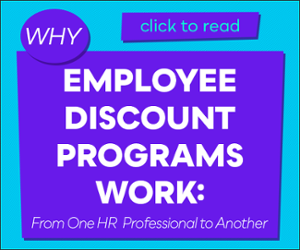I don’t know about you, but I’ve never been to a preschool graduation where 4-year-olds stand and proclaim their dream of becoming a corporate cog when they grow up. And the same can be said of college graduates. People want to be a viable piece of their organization. They want to do something that matters – and they want to matter to their company.
Yet, studies suggest employees are more disengaged than ever – which is a dangerous fact for employers considering today’s war for talent is brutal in the tightest job market we’ve had in decades.
What is Employee Disengagement?
According to Gallup, employees fall into one of three categories: engaged, not engaged or actively disengaged.
“Engaged” employees are committed to the company’s success and will go to great lengths to do more than their share of the work. They view themselves as a vital piece of the organization and are dedicated to providing customers and clients with quality products and/or services.
On the flip side, “actively disengaged” employees are so disgruntled at work that they’re intentionally sabotaging the organization’s efforts with clients and customers.
And employees Gallup calls “not engaged” fall somewhere in the middle. They show up for work, do their job with as little interaction with management as possible and are unlikely to go the extra mile for customers or the business as a whole.
Just How Disengaged Are Employees (and Does It Matter)?
Only 34% of employees in the United States are engaged in their job. And 16.5% are actively disengaged.
And what about the silent majority?
Too often we aren’t hearing what their silence is telling us. They don’t care. At least not like we want them to.
Most employees (49.5%) fall into the category of “not engaged” according to Gallup. While their disengagement may not be actively hurting your company, it is certainly costing you.
Disengaged employees cost organizations massive losses in productivity - between $450 and $550 billion annually. It’s like a leak in your pipes. All that lost opportunity revenue is seeping through the cracks and you may not even be able to see it.
And that's not all. A Gallup study shows that companies in the top quartile for employee engagement outperform their competitors in the lowest quartile in a slew of categories. In particular, they see:
- 10% higher customer ratings
- 21% higher profitability
- 24%-59% lower turnover
- 41% lower absenteeism
- 40% fewer quality defects
So no matter how you look at it -- productivity, reputability or profitability -- the results are pretty clear.
Engagement pays. Big time.
So What Can You Do?
If your organization is concerned about employee engagement, you aren’t alone. Only 12% of businesses are happy with current levels of employee engagement. And how many employers are doing something to raise that number? Probably not enough. But that doesn’t mean you shouldn’t. And the good news is, it may not be as daunting of a task as it seems.
You’ve heard of the golden rule: engage with your employees as you’d have them engage unto you.
According to global employment solution giant Monster, 45% of Millennials and 40% of Gen- X workers said work should have a greater purpose than earning a salary. They want to be engaged in your cause, but first you’ve got to engage in theirs.
How?
Offer Fair Compensation and Opportunities to Stretch Their Take-Home Pay
62% of Millennials, 50% of Gen X-ers and 36% of Baby Boomers are more likely to say that their loyalty to their company is influenced by how much the company cares about their financial well-being.
 Retirement saving plans and employee discount programs are two popular ways companies invest in their employees and prove they care. Couple these benefits with a competitive salary and your employees can spend less time worrying about their personal finances and more time focused on the job at hand.
Retirement saving plans and employee discount programs are two popular ways companies invest in their employees and prove they care. Couple these benefits with a competitive salary and your employees can spend less time worrying about their personal finances and more time focused on the job at hand.
Recognize Them For Their Efforts
One study suggests that 38% of Millennials would like to see the recognition program at their current employer improved.
A good way to build in opportunities for recognition is a friendly competition or two within the office. They can help boost morale while bringing a little fun in the workplace and encouraging employees to push a little harder at the same time.
In addition, regular reviews, opportunity for pay increases, and reward systems will often do the trick to let employees know you value their contributions.
Be creative and reward their efforts with something they will appreciate. In one study, 83% of Millennials ranked travel rewards as the number one reward that they would want most from an employer.
Provide Perks to Help Avoid Burnout
Employees who are very satisfied with their company’s benefits are almost 4 times more likely to be very satisfied with their jobs. But “employee benefits” doesn’t necessarily mean what it once did. Health Insurance and PTO are crucial – but not enough. In fact, 83% of employers have changed their benefits strategy within the last three years.
Onsite yoga, free soda, employee of the month parking and the like can go a long way with employees. Sometimes these “perks” are just the refreshing boost an employee needs to help them teeter from “satisfied” to “engaged.”
Keeping it Real
In an ideal world every one of your employees would be actively engaged in your business. The reality is – you probably have some who already are…and some who aren’t. Keeping your employees happy is an ongoing battle. Unfortunately, there probably isn’t one sure-fire solution or “magic perk” that’s going to solve all your disengagement woes. But it’s not a lost cause and there is a lot you can do.
The fact that you’re reading this and concerned about boosting employee engagement already shows you’re ahead of the game.
Start by looking for ways you can impact their lives outside of the office. Provide solutions to their common problems - saving money, getting around town, finding meals, eliminating debt, paying for school. Then build on what’s working and listen to their feedback. For more ideas, check out: 12 Employee Perks that Build Employee Camaraderie.







